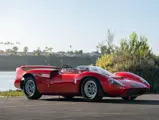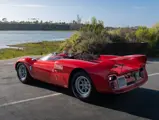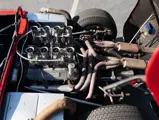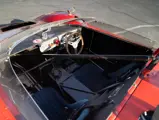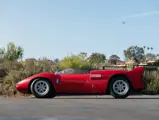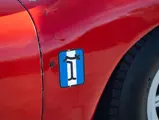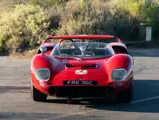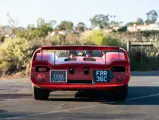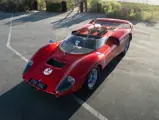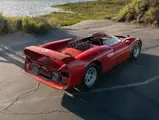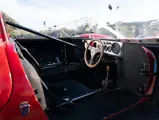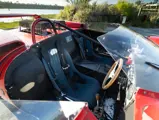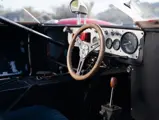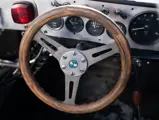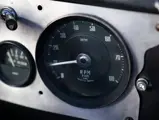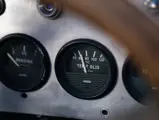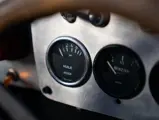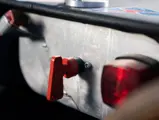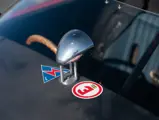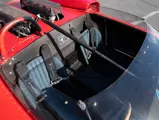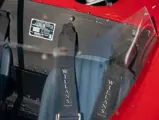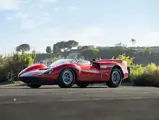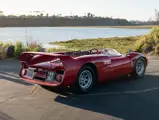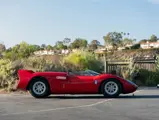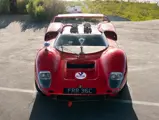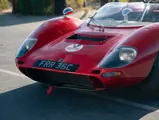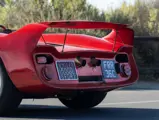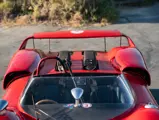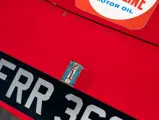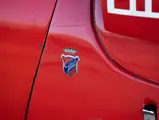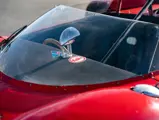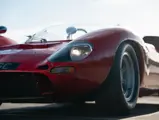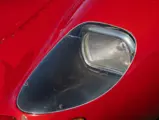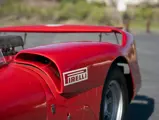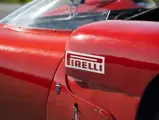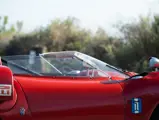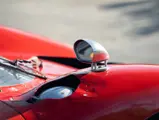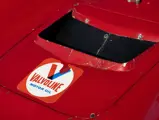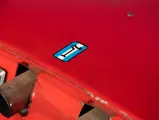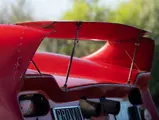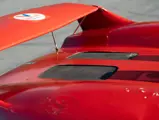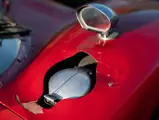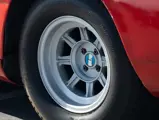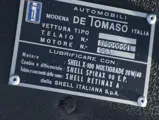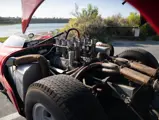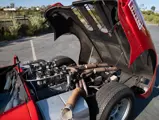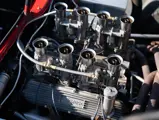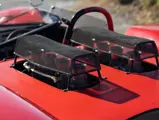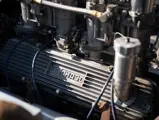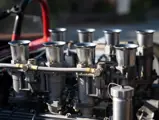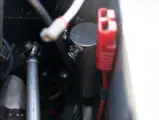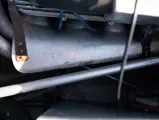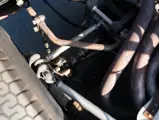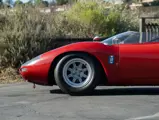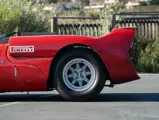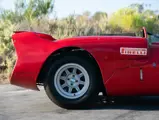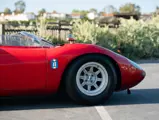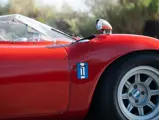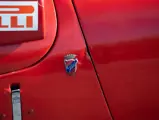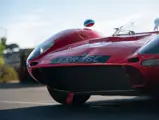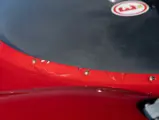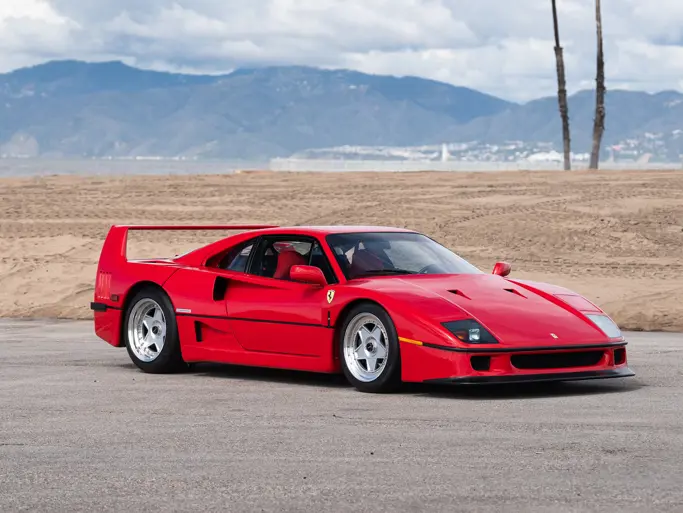Monterey 2022
1965 De Tomaso Sport 5000 Spyder by Fantuzzi
{{lr.item.text}}
$900,000 - $1,100,000 USD | Not Sold
 | Monterey, California
| Monterey, California
{{internetCurrentBid}}
{{internetTimeLeft}}

- The sole De Tomaso Sport 5000 Spyder example produced
- Driven by Roberto Bussinello in the 1966 Mugello 500 KM, at that time a round of the World Sportscar Championship
- Retained by the factory until Alejandro de Tomaso’s death in 2003
- Impeccably preserved; believed to retain its original body, mechanical components, and paint
- Eligible for numerous historic racing events, including the Monterey Historics and Goodwood Revival, as well as the Copperstate 1000 and other premier rallies worldwide
Few small-volume car manufacturers can boast as compelling or cosmopolitan a backstory as that of De Tomaso Automobili. Company founder Alejandro de Tomaso had been born to a wealthy and politically active Argentinian family, although he fled to Italy in 1955 after his implication in a plot to overthrow then-President Juan Perón. An accomplished amateur racing driver himself, de Tomaso competed throughout the latter part of the decade; his career encompassed two World Championship Grands Prix, four participations in the Sebring 12 Hours and a class win—and 11th place overall—in the 1958 Le Mans 24 Hours.
In 1957, de Tomaso married American heiress Isabelle Haskell, the granddaughter of William C. Durant (one of the founders of General Motors). They settled in Modena—then the epicenter of the Continental European race car manufacturing industry—where de Tomaso commenced production of a variety of moderately successful Formula Junior chassis, as well as several uncompetitive Formula One and Two designs. However, in 1963, he ventured into road car production for the first time with his attractive Ford Cortina-powered, two-seat Vallelunga coupe. Employing a pressed steel backbone chassis with a tubular rear sub-frame, its engine functioned as a stressed member, thereby improving torsional rigidity and enabling impressive levels of performance from a car generating barely 120 horsepower.
Suitably fortified by the dynamic—if not commercial—success of the Vallelunga, in 1965 de Tomaso embarked upon his most ambitious project to date: the dramatic P70 spyder. An ambitious collaboration between De Tomaso, Carroll Shelby, and former Daytona Cobra Coupe designer Pete Brock, the car was intended as a prospective entry into the burgeoning North American-based Can-Am series as well as longer-distance European events. It borrowed heavily from the design of the Vallelunga, featuring a steel backbone chassis and a stressed engine; in this case a Shelby-sourced competition version of the tried-and-tested 289-cubic-inch Ford unit. A five-speed Colotti transaxle transmitted power to the road, while Brock’s futuristic body design was transformed into reality by Modenese master craftsman Medardo Fantuzzi; the latter incorporated a dramatic rear wing originally intended to be controlled remotely by the driver.
An initial batch of 10 cars was scheduled, with a further 40 planned to satisfy homologation requirements. However, initial optimism surrounding the project all but evaporated when Shelby relinquished his involvement to concentrate on Ford’s then-troubled GT40 program; the Texan and de Tomaso had endured a famously fractious relationship up to this point. At the time of Shelby’s departure just one chassis was under construction, with de Tomaso subsequently forming an unlikely alliance with Carrozzeria Ghia to progress the car to completion. Duly finished, the P70 was publicly unveiled at the Turin Motor Show in November 1965.
Despite this unexpected change in direction, de Tomaso had progressed with the construction of another car, the Sport 5000 Spyder, with the intention of contesting selected international events in 1966. Though built around the same chassis design as the P70 and wearing similar bodywork, the Sport 5000 Spyder included certain distinguishing features (including a taller windscreen with wiper and more conventional doors) to meet FIA regulations.
Indeed, entries were submitted for both the Sebring 12 Hours and Le Mans 24 Hours of that year—with Sports Car veterans Pierre Noblet and Umberto Maglioli as nominated drivers—although regrettably neither race materialized. However, on 17 July 1966, the Sport 5000 did make its race debut, in the grueling Mugello 500 KM, at that time a round of the World Sportscar Championship. Driven by long-time De Tomaso associate and concurrent works Alfa Romeo driver Roberto Bussinello, the car took the start but regrettably suffered a mechanical failure on the first of eight scheduled 66.2-kilometer laps.
Incredibly, this marked both the commencement and conclusion of the Sport 5000’s competitive career. After Mugello, chassis SP5000-001—the car which RM Sotheby’s is proud to offer here—returned to De Tomaso’s Modena works, where it would languish for almost four decades until Alejandro de Tomaso’s death in 2003, aged 74. Purchased by a Belgian collector directly from his estate in 2005, it subsequently passed into US-based ownership and is now offered for sale on behalf of only its third owner.
Impeccably preserved in near-time warp condition, the car offers a fascinating insight into both contemporary Italian Sports Prototype design and “what might have been,” had the GT40 program not lured Shelby away from the project. Notably, its well-preserved original cosmetic condition stands in dramatic contrast to the De Tomaso P70 companion car, which has since been fully restored.
As a car with period international race history, this spectacular De Tomaso remains eligible for FIA papers and would be a welcome addition to numerous historic events, not least the Monterey Historics, Goodwood Revival, or Silverstone Classic—to say nothing of participation in exhibitions and thrilling tours and rallies, such as the Copperstate 1000, both at home and abroad.

